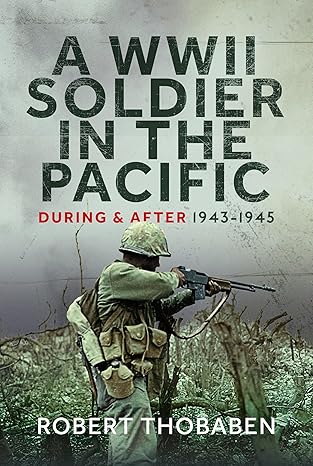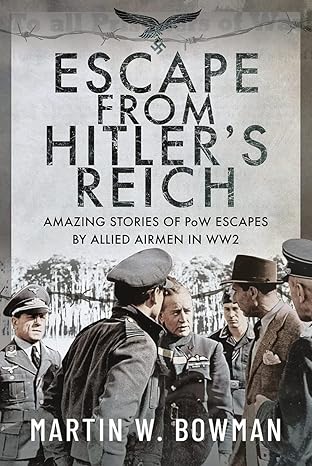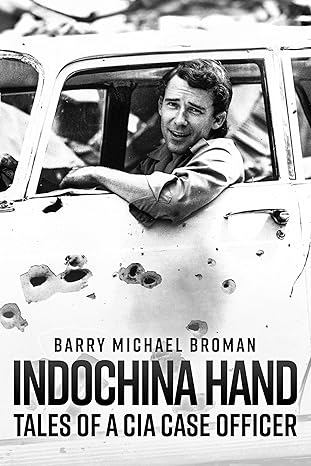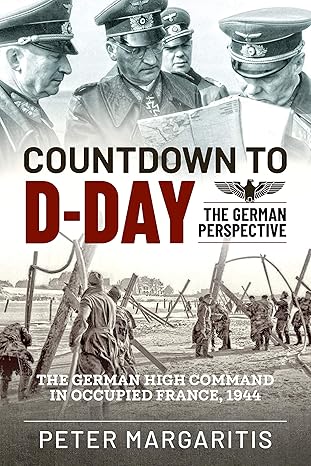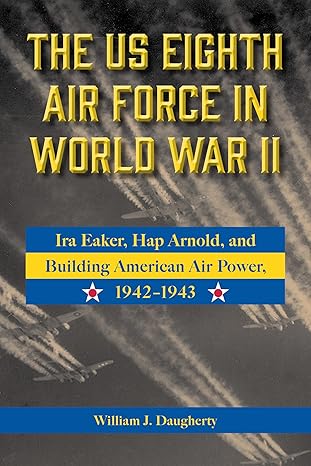Home / Weapons, Economies, and Societies: How Total War Redefined Competition and Conquest
Weapons, Economies, and Societies: How Total War Redefined Competition and Conquest
By Mr. Shawlinski & SGM Lusiani
Total war refers to a type of warfare in which there are no limitations on the methods or means employed to ensure victory. The foundation of this concept of competition are the disregards of traditional boundaries, involving unrestricted use of weapons, targeting of territories, and engagement of combatants without distinction. In total war, the pursuit of strategic objectives often takes precedence over adherence to the established rules and conventions governing warfare, including the laws of war. The scale of destruction extends beyond military targets to impact civilian populations, infrastructure, and resources, reflecting a comprehensive mobilization of all available societal, economic, and military assets toward the war effort. This peculiar form of war has accompanied the history of humankind from the ancient times into the present day (Encyclopaedia Britannica, n.d.).
Ancient civilizations began the process of turning war into a thorough social undertaking, with significant improvements during the Middle Ages, and further refinement during the global conflicts of the 20th century. Throughout history, total war has evolved with changes in technology, societal structures, and political realities, driven by the relentless goal of annihilating rival civilizations, targeting their military forces, populations, economies, and cultural foundations. The overarching goal of total war is to dismantle the enemy’s societal framework and absorb their resources, leaving no room for recovery or resurgence. This approach seeks the full subjugation or eradication of opponents, ensuring that every aspect of their strength—whether economic, industrial, or human—is either destroyed or assimilated to further the victor’s objectives (Hanson, 2020).
Carl von Clausewitz emphasized that each era shapes warfare through its unique circumstances and prevailing ideas (Clausewitz, 1984). The full-scale invasion of Ukraine by Russia has redefined the concept of total war. As the largest land conflict in Europe since World War II, it highlights a type of warfare that many societies had seemingly forgotten. While Russian and Ukrainian forces are the primary combatants, the war has significantly impacted global geopolitics, involving numerous other nations indirectly (Karlin, 2024). For the United States, understanding this evolving form of total war is crucial, particularly to prepare for potential contingencies in the Indo-Pacific and to enhance societal resilience. The history of total war—spanning ancient, Medieval, and modern periods—demonstrates its defining characteristic: the unrestricted use of methods and resources to annihilate opponents and seize control of their populations, economies, and infrastructures.
Understanding Total War: A Five-Dimensional Approach
Conflict scholars and military historians rigorously analyzed concepts and dimensions of total war. Stig Förster (1999), a significant contributor to this field, identified four key dimensions that characterize this form of warfare: total purposes, total methods, total mobilization, and total control. Building on Förster’s work, Peccia (2021) added a fifth dimension, “total change”, arguing that total war’s impact extends far ahead of the immediate conflict, deeply transforming political, social, economic, and cultural aspects. Total purposes explain how belligerents’ ambitions tend to reshape power dynamics enduringly, aiming beyond battlefield victories towards hegemonic goals and lasting influencing expansion. Total methods illustrate common strategies utilized by countries to assert control and influence by any means necessary, often blurring the lines between combatants and civilians, and mobilizing the entire population into a universalized war effort. Total mobilization reflects the full involvement of the entire population, contributing through industry, logistics, and morale, harnessing the nation’s entire economic and social potential to support the war and reshape traditional roles. Total control defines the complete subjugation of individual lives to the state’s authority, enabling comprehensive orchestration of society through propaganda, stifling dissent, and directing all the political and economic activities toward unified war efforts. Centralized authority within a ruling elite frequently served as the foundation for the emergence and consolidation of authoritarian and totalitarian regimes throughout history (Förster, 1999; Peccia, 2021). Total change underscores the profound societal transformations driven by total war. Beyond physical destruction and political impacts, this principle tends to reshape cultural norms, gender roles, technological advancements, economic systems, and political ideologies, leaving lasting effects on future policies, societal expectations, and cultural narratives across generations (Peccia, 2021). Throughout the history of warfare, the principles of total war have demonstrated the transformative process that reshapes a nation’s political systems, social structures, cultural values, and economic foundations, often with lasting global repercussions.
Rome’s Strategic Dominance:
The Legacy of Total Purpose and Control during the Punic Wars
In ancient times, warfare was widespread but generally limited in scope, primarily concentrating on battles between soldiers and military forces. Civilian populations often remained on the margins of direct involvement, typically affected only when captured, enslaved, or displaced by victorious armies. However, as war advanced, new types of conflicts began to emerge that broke these boundaries, spreading their impact across entire societies and foreshadowing the concept of total war. These battles saw the mobilization of entire populations, the systematic destruction of economic resources, and the deliberate targeting of non-combatants, demonstrating how warfare could engulf all aspects of a society (Hanson, 2009). The Punic Wars, fought between Rome and Carthage from 264 BCE to 146 BCE, offer a compelling illustration of the principles of total purpose and total control, both of which are foundational to the concept of total war.
Alliances and Citizenship in Rome’s Expansionist Vision
Rome’s unyielding pursuit of Carthage’s destruction to secure dominance in the Mediterranean precisely describes the commitment of all societal resources to achieve the singular, overarching objective of total purpose. The Roman Middle Republic, driven by a vision of expansionism in the Mare Nostrum and economic supremacy, mobilized every aspect of its society toward this end, encompassing all societal dimensions. Rome strategically formed alliances and extended its citizenship to the allied cities, funneling resources and manpower from absorbed territories into the war effort. The majority of the Socii lost their political independence but retained control over their internal affairs while benefiting from their bond with Rome. Their soldiers fought in Rome’s wars and shared in the spoils of the resulting victories. Rome continued to expand, transforming defeated enemies into loyal yet distinctly subordinate allies. As Rome’s territory grew, so did its citizen population, which, combined with the contributions of its allies, provided vast military manpower—far surpassing that of Carthage (Goldsworthy, 2003).
The construction of a vast fleet during the First Punic War exemplified the principle of total purpose as Rome strategically harnessed its resources to dominate Carthage at sea. Recognizing that naval supremacy was essential for total victory, Rome made a deliberate decision to build and deploy a powerful fleet, despite its limited maritime experience. Rome’s shift to naval warfare represented a clear alignment of all resources toward a singular goal: the subjugation of Sicily and the broader weakening of Carthage. By integrating allied resources and knowledge from the Magna Graecia colonies, innovating naval tactics, and committing to full-scale engagement, Rome effectively replaced Carthage as the dominant sea power. This victory laid the foundation for future campaigns and showcased Rome’s ability to escalate conflicts and rapidly adapt to achieve strategic objectives, which laid the foundations of total war (Goldsworthy, 2003).
Comparing Governance: Rome’s Cohesion vs. Carthage’s Fragmentation
During the Punic Wars, equally significant was the application of total control, which involved the centralized coordination and management of resources, strategies, and policies to ensure the war effort remained unified and effective. Both Rome and Carthage exhibited varying degrees of total control, but Rome’s centralized republican system proved more adept at sustaining prolonged conflict. The Roman Senate played a crucial role in directing the war effort, ensuring cohesion among its commanders and adapting strategies to the dynamic battlefield. Within the Second Punic War, Hannibal’s bold and audacious campaigns put the principle of total control to a severe test, weaking the values of the Republic and disrupting former alliances. Despite devastating losses in battles like Cannae in 216 BCE, Rome’s ability to retain control over its citizens and allies while adapting its military strategies highlighted the resilience and effectiveness of its governance structures (Lazenby, 1998). The Roman practice of appointing multiple consuls and proconsuls allowed for a more resilient and decentralized response to threats, all while remaining anchored to the overarching goals set by the Senate. Carthage, in contrast, struggled to fully realize these principles. While Hannibal’s leadership demonstrated exceptional tactical brilliance, the lack of unified control within Punic politics and its reliance on mercenaries rather than a citizen army hindered its ability to sustain a total war effort. The Barcid’s reliance on local support during his campaigns in Italy highlighted the Carthaginian state’s limited capacity to project and sustain total control across its territories (Briscoe, 1989).
Rome’s relentless focus on total purpose culminated in the Third Punic War, where the annihilation of Carthage became not just a military goal but a cultural imperative. The complete destruction of the city in 146 BCE and the enslavement of its population epitomized the extreme application of both principles (Miles, 2011). The Punic Wars illustrate how total purpose and total control can transform conflicts into existential struggles, mobilizing entire societies and making victory synonymous with the enemy’s annihilation. Rome’s approach provides a framework for understanding the enduring dynamics of total war throughout history. Building on Rome’s demonstration of total purpose and control, the Crusade era in the Middle Ages similarly exemplified how ideological fervor and societal mobilization could redefine warfare, uniting populations under a common cause.
Religious Zeal and Societal Integration in Medieval Conflicts
During the Crusade era in the Middle Ages, religious zeal and societal integration fundamentally reshaped warfare. Small-scale skirmishes and raiding parties of the Dark Ages gave way to expansive conflicts that mobilized once again entire populations. Religious fervor, driven by the Crusades and calls for jihad, intertwined with political ambitions and economic imperatives, creating a renovated level of societal involvement. These dynamics expanded the scale of warfare, requiring resources, logistics, and civilian contributions on a larger scale (Blaydes, 2016). This shift foreshadowed the principles of Total War, characterized by total method and total mobilization, where all aspects of society, from economic resources to civilian labor, actively supported the war effort. These dynamics profoundly transformed medieval communities, integrating social, economic, and political structures into warfare and laying the groundwork for the evolution of modern military strategies (Cambridge University Press, n.d.).
Societal Mobilization and Total Methods in Medieval Warfare
In the early medieval period, aristocrats and their retinues engaged in localized conflicts centered on plunder, but later medieval warfare expanded into integrated efforts that mobilized entire societies. As Contamine (1984) observed, wars such as the Crusades and Islamic jihad exemplified this transformation, drawing on the principles of total mobilization. Communities across different regions participated in activities beyond the battlefield, including cultivating food, managing logistics, and financially and materially supporting armies, marking a critical evolution in the nature of warfare.
The Crusades (1096–1291 CE) vividly demonstrate the societal shift to total modernization, as European leaders harnessed religious fervor and the papacy’s call to arms to unify their populations under a common cause. Religious zeal transcended class boundaries, inspiring not just elite nobles but also peasants, artisans, and clergy to contribute to the war effort. This universal societal support ranged from financing and provisioning to fortifying military endeavors. The sense of shared purpose created by religious fervor unified people across social strata and enabled the mobilization of entire communities for the Crusades (Riley-Smith, 2005). Similarly, in the Muslim world, the concept of jihad played a comparable role in uniting diverse populations. Early Islamic conquests and later resistance to crusader invasions mobilized vast resources and people across regions. Leaders like Saladin exemplified this coordination, as he unified Egypt and Syria to support prolonged military campaigns against his enemies. Civilians actively contributed by building fortifications, supplying provisions, and spreading propaganda to sustain public morale and garner widespread support. These collective efforts highlight the total mobilization of society in response to warfare’s demands (Hillenbrand, 1999).
The Role of Ideology and Propaganda
Religious ideology played a central role in mobilizing medieval societies, shaping the political and military landscapes of both Europe and the Islamic world. European leaders, supported by the papacy, used sermons, letters, and propaganda to garner public support for the Crusades, promising salvation and material rewards in exchange for participation. This appeal inspired soldiers and civilians alike, fostering a collective sense of purpose that surpassed individual concerns and united people under a common religious cause (Riley-Smith, 2005). In the Islamic world, leaders like the founder of the Ayyubid dynasty also utilized religious rhetoric to inspire unity and commitment. Public speeches, inscriptions, and poetry highlighted the importance of defending Islam against external threats, strengthening the resolve of communities to resist invaders. These efforts exemplified the power of religious fervor in mobilizing societies, demonstrating how leaders could invoke shared beliefs to rally people in times of conflict (Hillenbrand, 1999). Religiously charged motivations on both sides showed how leaders integrated ideology into wartime mobilization during the medieval period, with the Crusades and Islamic jihad intertwining faith and warfare.
Resource Allocation and Technological Innovation: The Total Method in the Crusades
The extended nature of the Crusades placed significant strain on medieval economies, underscoring the principle of total method. European and Islamic leaders implemented extensive taxation systems to fund their military campaigns. These taxes redirected resources from traditional agricultural and commercial activities, disrupting trade routes and reducing agricultural productivity (Therman, 2006). The European countries demanded substantial financial resources, leading Christian rulers to impose heavy taxes and liquidate assets. Louis VII of France and Henry II of England implemented a five-year royal tax to fund their campaigns (Library of the Sovereign Military Order of the Temple of Jerusalem, n.d.). Similarly, Saladin relied on the collection of zakat (alms) and other taxes to sustain his military efforts (Hillenbrand, 1999). These measures enabled the acquisition of weapons, provisions, and fortifications, demonstrating how deeply economic structures became intertwined with military objectives.
The widespread use of propaganda and the full integration of societal resources into the war effort exemplify the increasing reliance on total mobilization and the application of comprehensive methods in warfare. This evolution, evident even in medieval warfare, reflects the early emergence of principles that would later define total war, as entire societies became enmeshed in conflicts, reshaping economies and communities while leaving a profound impact on the trajectory of military history. These foundational concepts reached their full expression in the modern era, where technological advancements, industrialization, and centralized governance further magnified the principles of total war, once again transforming the scale, scope, and societal impact of conflicts.
The Five Pillars of Total War: Insights from the Russia-Ukraine Conflict
The magnitude and scope of warfare have undergone profound transformations, reaching their zenith during the two World Wars, where the repercussions extended across entire society. The current geostrategic environment, defined by globalization, rapid change, and pervasive uncertainty, has amplified the principles of total war. Disruptive technologies, industrialization, and centralized governance continue to shape both current and future conflicts, redefining their nature and impact. The ongoing Russian invasion of Ukraine has starkly resurrected destructive practices once thought to belong to the past. This conflict illustrates the mobilization of resources—both military and civilian—the strategic targeting of critical infrastructure, and deliberate efforts to weaken the opponent’s societal and operational capacity. Moreover, the global ramifications of this war, including economic sanctions, massive refugee flows, and shifts in international alliances, underscore the extent to which the strategies of total war remain relevant.
The United States and its NATO allies have provided unprecedented financial and material support to Ukraine, while China, Iran, and North Korea have significantly aided Russia. What the world is witnessing is an evolved form of total war, where combatants mobilize extensive resources, prioritize warfare above all state activities, target a wide array of objectives, and restructure domestic and global economies. However, advancements in technology and the interconnectedness of the global economy have introduced new dynamics, distinguishing modern conflicts from those of the past (Karlin, 2024). The principles of total war have adapted in this era, leaving lasting impacts on societies long after the fighting ends. These elements highlight how deeply these principles continue to shape modern geopolitical conflicts, proving their enduring significance in understanding and addressing contemporary warfare.
Freedom vs. Hegemony: Total Purpose in the Russia-Ukraine War
In the context of the Russia-Ukraine war, Kyiv resolutely defends its sovereignty, national identity, and survival, while Moscow actively seeks to reassert its influence over Ukraine. These actions clearly demonstrate the principle of total purpose, as both nations pursue overarching, existential objectives that mobilize all available national resources and efforts. President Volodymyr Zelenskyy has consistently framed the conflict as a fight for freedom, democracy, and the survival of an independent Ukraine, calling for unity and resilience among the Ukrainian people (Zelenskyy, 2022). On the other hand, President Vladimir Putin has articulated goals that extend beyond territorial acquisition. These include the “demilitarization” and “denazification” of Ukraine, as well as the protection of Russian-speaking populations within Ukrainian borders (Kremlin, 2022). Such objectives suggest a broader ambition to reassert Russian influence over former Soviet territories and counter perceived encroachments by Western powers. In response to Russia’s stated objectives, Ukraine has countered by emphasizing its legitimate right to self-determination and rejecting the Kremlin’s narratives as baseless propaganda aimed at justifying aggression. The conflict has become a defining moment for Ukraine’s national identity, embodying the total purpose of their resistance against an aggressor intent on reshaping power dynamics. Russia’s ambitions extend beyond battlefield victories, aiming for hegemonic dominance and the long-term expansion of its influence.
Innovation vs. Indiscrimination: The Principle of Total Method in a Modern Conflict
During the war in Ukraine, the principle of total method has driven Kyiv to adopt innovative and adaptive strategies to counter Moscow’s overwhelming firepower. The conflict underscores how both sides leverage all available tactics and technologies, without restriction, to achieve military objectives. Russian forces have employed a diverse array of methods, including artillery bombardments, missile strikes, and cyber operations targeting both military and civilian objectives. In contrast to the global war on terrorism initiated after 9/11, more nations now possess increased capital and enhanced research and development capabilities, enabling them to swiftly and effectively develop countermeasures against new weapons and technologies (Karlin, 2024). Military scholar J. F. C. Fuller highlighted this recurring dynamic, where advancements in weaponry consistently lead to countermeasures that neutralize their effectiveness (Fuller, 1945).
The principle of total war has taken a distinct form in Ukraine. Russia refrained from using weapons of mass destruction because of firm and timely warnings from the international community about the “catastrophic” consequences that would follow such actions. These warnings proved effective, supported by efforts to persuade key Asian and European nations, particularly China and India, to publicly denounce the potential use of nuclear weapons in Ukraine (Karlin, 2024). During the post-9/11 era, deterrence received little attention because it appeared irrelevant to conflicts with nonstate actors such as al Qaeda and Daesh. However, in today’s geopolitical climate, dissuasion has regained prominence as a critical factor in managing escalation. Almost every discussion of global foreign policy and national security now revolves around this concept. In contrast, Ukraine has utilized a blend of conventional and unconventional tactics, such as deploying drones for precision strikes, enhancing cyber defenses, and conducting asymmetric warfare to disrupt Russian operations. Ukraine’s military has also prioritized minimizing civilian casualties and adhering to international law by focusing on military objectives, creating a stark contrast to Russia’s indiscriminate methods (Zelenskyy, 2022).
Furthermore, Kyiv has actively documented and exposed alleged war crimes by Russian forces, galvanizing international support and strengthening its moral position in the conflict. However, Russia’s actions, such as the use of thermobaric weapons and the deployment of cluster munitions in populated areas, have raised serious concerns about violations of international humanitarian law (Amnesty International, 2022; Human Rights Watch, 2024). These tactics underscore Russia's readiness to employ any methods deemed acceptable by the international community to achieve its strategic objectives. The contrasting application of the principle of total method illustrates how nations mobilize their entire populations and utilize all resources to assert control and influence, often blurring the lines between combatants and civilians in the pursuit of dominance.
Total Mobilization in Ukraine: A Tale of Survival and Aggression
In Ukraine, both nations have undertaken significant measures to mobilize their resources, including increased defense spending and the redirection of industrial production toward military needs, such as manufacturing weapons, ammunition, and other essential supplies. Additionally, both countries have implemented large-scale mobilization, calling up reservists and conscripting individuals to replenish their forces. For Kyiv, total mobilization has been a necessity for survival against an aggressor with far greater resources. The Ukrainian government has galvanized its population, integrating civilian efforts into the defense strategy. Volunteers have contributed to producing essential supplies, repairing military equipment, and fortifying infrastructure. Ukraine’s economy has shifted to sustain the war effort, with businesses and industries repurposing their activities to support the military. President Volodymyr Zelenskyy’s appeals for unity and resilience have further solidified the country’s commitment to defending its sovereignty and identity (Zelenskyy, 2022).
Moscow, on the other hand, has diverted a significant portion of its GDP toward its defense industry and sought additional equipment and personnel support from its allies. Partial mobilization efforts, including calling up reservists, sparked domestic resistance as citizens protested and fled the country to avoid conscription (BBC News, 2022). These efforts highlight the stark contrast between Ukraine’s fight for survival and Russia’s assertive posture, underscoring the centrality of a new form of total mobilization in shaping the outcomes and societal impacts of the conflict.
Unifying Nations in Conflict: Divergent Applications of Total Control
Total war, both historically and in contemporary conflicts, requires centralized authority and the suppression of dissent to maintain a unified national effort. Putin’s government has tightened control over information and public discourse surrounding the war. Authorities have criminalized the spread of “false information” about the military through legislation, shutting down independent media and arresting dissenters (The Guardian, 2022). State-controlled outlets amplify official narratives, portraying the invasion as necessary to protect Russian interests and counter Western aggression. These actions reveal Moscow’s calculated efforts to dominate the narrative, suppress opposition, and secure public support for its war strategy.
In contrast, Ukraine leverages the principle of total control to unify its population and defend its sovereignty. Zelenskyy has emphasized transparency and open communication, addressing both citizens and the global community with regular updates. His speeches and active social media presence have fostered national cohesion and drawn international support for Ukraine’s resistance (Zelenskyy, 2022). Unlike Russia’s suppressive approach, Ukraine champions democratic principles, encouraging open dialogue and emphasizing resilience and solidarity. This sharp contrast highlights the ideological and strategic divide between the two nations, underscoring a broader conflict between democracy and authoritarianism shaping the war. The redefined principle of total control in modern conflicts emphasizes how nations strive to dominate every aspect pf warfare, frequently leading to a clash of values as competing ideologies and governance models compete for global influence.
The Ukraine War: Total Change in Global Norms and Societal Structures
The war in Ukraine is profoundly reshaping societal structures and norms that underpinned a long period of peace. Russia frames its actions as a fight against Western imperialism and neo-colonialism, aiming to establish a multipolar world order free of external interference. However, the Kremlin’s aggression has revealed its imperialist ambitions toward neighboring countries in Europe, the Caucasus, and Asia. The invasion has caused significant economic upheaval, with international sanctions disrupting industries, driving inflation, and creating shortages of essential goods (Financial Times, 2022). Mobilization efforts have further strained civilian life, as families face conscription, and communities adjust to the absence of deployed members. In Ukraine, the war has brought transformative societal changes, centered on resilience and unity. The conflict has galvanized the population, fostering collective efforts to support the military and adapt to wartime demands. Ukrainian industries have redirected production to meet defense needs, while civilians have volunteered to provide logistical support, repair infrastructure, and assist displaced populations (Zelenskyy, 2022). Communities have united to sustain morale and maintain the national effort, demonstrating remarkable adaptability in the face of adversity.
NATO and Western nations have also undergone significant political-economic transformations in response to the conflict. Economic sanctions on Russia have reshaped global trade, disrupting key sectors such as energy and finance. Increased defense spending across NATO countries reflects a major shift in military priorities, strengthening collective security (NATO, 2022). Western nations have restructured energy strategies to reduce dependence on Russian resources, accelerating the transition to renewables and diversifying supply chains (International Energy Agency, 2022).
The war has also exposed weaknesses in international organizations and global norms. The United Nations has struggled to address the crisis effectively, with the Security Council paralyzed by Russia’s veto power as a permanent member (United Nations, 2022). The UN’s inability to enforce international law or prevent human rights abuses in Ukraine highlights its challenges in adapting to modern conflicts and maintaining its role as a credible global peacekeeping body (Human Rights Watch, 2024). These developments underscore profound economic, political, and security transformations that are redefining global landscapes to counter aggression and support Ukraine’s sovereignty.
Conclusion: Strengthening Forces and Societal Resilience
The principles of total war, as exemplified through historical analysis, emphasize the necessity of transforming societal structures, economies, and global norms to endure and overcome modern challenges. Conflicts during the History of humankind have exposed the vulnerabilities of geopolitical systems and highlighted the critical importance of preparedness and resilience. For military forces, this means adapting to evolving technologies, enhancing coordination among allies, and prioritizing strategic flexibility to counteract both conventional and hybrid threats.
Conventional conflicts would likely see a surge in “anti-access/area-denial” capabilities, employing tools and techniques to limit the reach and maneuverability of militaries, especially in the Indo-Pacific region. While nuclear threats would remain, their impact would be less severe than the existential dangers of the past. These shifts should prompt strategists and planners to reconsider modern warfare's dynamics and, more importantly, how to prepare for future conflicts. Preparing for the type of war the United States is most likely to face could strengthen its ability to deter its primary rival, potentially preventing such a conflict altogether. Effective deterrence against an increasingly assertive near-peer adversary requires demonstrating that any aggressive steps would not be worth the risk and would likely result in failure. To make deterrence credible in an era of multifaceted conflict, the United States must show readiness for new forms of warfare, leveraging lessons from current large-scale conflicts to avoid even greater ones in the future.
In the event of total war, equally vital is fostering societal resilience. As this type of warfare—spanning ancient, Medieval, and modern periods—demonstrates, a unified and adaptable population is a cornerstone of effective resistance. Investments in education, infrastructure, and communication networks bolster a society’s ability to endure hardships and contribute to national defense. The intrinsic transformative power of this form of warfare necessitates not only robust military capabilities but also cohesive communities capable of withstanding external aggression while preserving democratic values and cultural identity. By preparing forces and enhancing societal resilience, nations can safeguard their sovereignty, uphold international stability, and promote a more secure and equitable world order.
| * * * |
Show Notes
| * * * |
© 2025 Mr. Shawlinski & SGM Lusiani
Mr. Robert Shawlinski serves as an Assistant Professor and Master Instructor at the United States Sergeants Major Academy for over 14 years and currently, teaches in the Department of Army Operations. He holds an M.Ed. in Education from Trident University in California and has deployed to Desert Storm and Operation Iraqi Freedom.
SGM Fabio Lusiani is a senior noncommissioned officer in the Italian Army with over 28 years of distinguished service. He currently serves as a Senior Instructor at the United States Sergeants Major Academy, where he is assigned to the Department of Army Operations. SGM Lusiani holds a B.A. in Business and Management Science from Tuscia University, Italy. He has participated in numerous deployments as a Civil Affairs operator specializing in intelligence.
* Views expressed by contributors are their own and do not necessarily represent those of MilitaryHistoryOnline.com.

